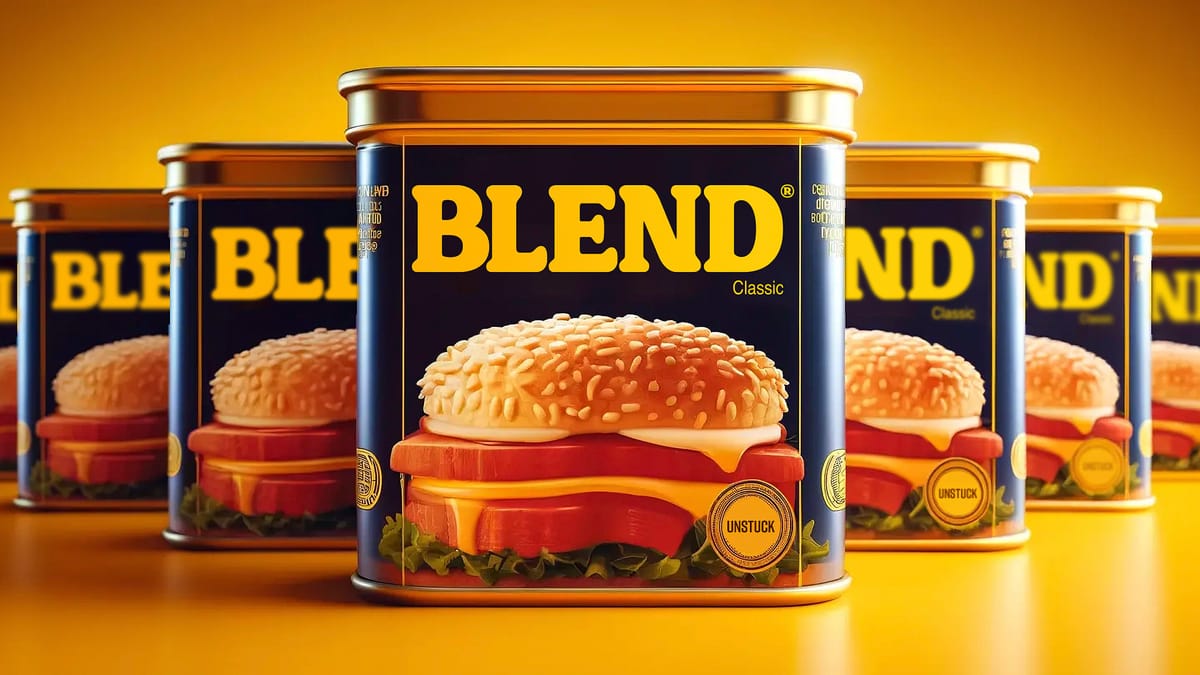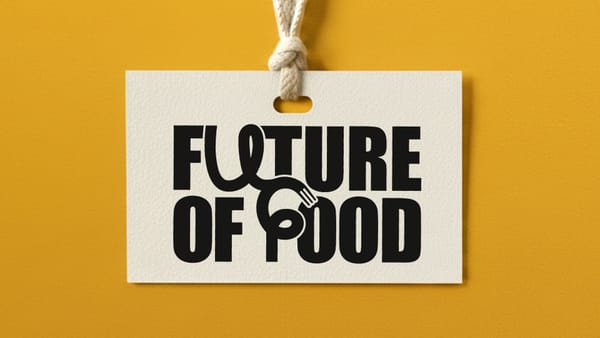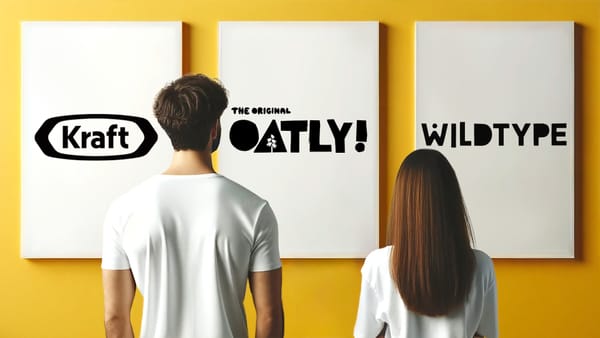UNSTUCK 007: Blended Meat Saved The World Once, Can It Do It Again?
How identifying a real consumer problem to solve will win you customers.

During World War 2 blended meat fed the armies that saved the world. Today, it is a solution without a meaningful problem. To deliver on their promise of immediate impact, blended meat companies need to employ and empower proper marketers.
It never hurts to repeat the often quoted but less often followed mindset popularized by the late great Harvard Business School professor Ted Levitt – “people don’t want to buy a quarter-inch drill, they want a quarter-inch hole.”
Blended meat today falls squarely into the drill category. A drill that’s cheaper to make. A drill that masks the weird tastes of name your plant-based ingredient of choice. A drill that displaces at least some slaughtered animal protein. But a drill nonetheless. An industry-led product solution, not a hole that people will want to buy.
The three models of sustainable food drills
There’s a recurring pattern in sustainable food. It starts with a bunch of tech bros who get together and try to copy and paste a model that’s worked in the tech world onto food. You can hear the pitch as the elevator doors are closing: “We’re building the Prius of meat!” So a VC signs a check and the Prius of meat is built, but the consumer doesn’t come. 50/50's Both falls into this category, the self-proclaimed "burger that's going to change everything". You don’t need to look far beyond the name to see it’s a just a drill, not a hole.
When that doesn’t work, a bit of marketing is slapped on at the tail end of the process to “educate the consumer”, (in stark contrast to the correct approach understanding the consumer and positioning the brand and products against their needs). We’re not sure exactly which consumer has ever suggested a need to go to alt protein school, but companies keep trying this regardless. Something like Paul's Table, may it rest in peace, found itself here. A drill dressed up in retro graphics is still a drill, not a hole.
When that fails too, they pull out the pivot of last resort. We’re talking about foodservice. This will surely work because it’s a controlled environment and people will do what they’re told. Exhibit A here is something like Mush. It’s not a Black & Decker, it’s a DeWalt, the drill for the professional contractor, or chef in the case of food. The hope presumably is that the chef can figure out what the consumer wants, but without the proper support that's a tough job to pass down the line.
Find the hole, save the world

If there’s a blended meat brand that successfully found a real problem to solve, a hole instead of a drill if you will, it has to be SPAM. When Sophie Attwood pointed this out in her analysis of the category for Psychology Today, we immediately ran to the cupboard to pull out a can and verify this brilliant insight. Lo and behold, there it was, staring at us all these years. 89% pork, 11% spices and potato starch.
SPAM, short for spiced ham, is a blended meat. But it didn’t succeed just by hiding or disguising the drill as Sophie suggests. It succeeded because it didn’t focus on the drill, but found its hole instead. Initially that was ease of handling and preparation. Your maid has a night off? No problem, SPAM the miracle meat is always on hand and easy to prepare explain the brand's launch ads from the 1930s.
The longevity of SPAM – a can lasts up to 5 years – really came into its own during World War 2. Allied armies had tens of millions of mouths to feed and no reliable way to get conventional meat to the jungles of islands in the Pacific or across the steppes of the Eastern front. Nikita Khrushchev himself credited SPAM with saving the Russian army.
By 1959 Hormel had sold over a billion cans of the stuff, and today claims 13 cans are consumed every second having become part of food cultures around the world. You could argue that blended meat has saved the world once already.
Employ and empower marketing to find the holes
Blended meat doesn't need deep tech – it needs a product that meets a clear consumer pain point and a team that can position accordingly and build a strong brand. In other words, proper marketing.
The problem is that too often sustainable food companies either have glorified social media managers in marketing roles, or have no marketing team to speak of at all. The skillset to craft a compelling positioning based on a deep understanding of consumer needs, and the authority to formulate the 4Ps of classic marketing, is very different from the ability to put out a press release at the bidding of tech-mindset founders or post a story on Instagram.
Ask consumers if they like the idea of eating something delicious, upping their veg intake and doing their bit for sustainability at the same time, no doubt you’ll get 94% of consumers telling you they’d definitely or likely buy your product. Would they pay a bit more for it? Absolutely. But this is the problem with rational, quantitative research as we talked about in the last Unstuck. It’s not reflective of behavior in the real world and doesn’t consider what it takes to get consumers' attention, and disrupt their repertoire of food purchasing.
Indeed the problem we’re seeing is that the concept of adding plants to meat isn’t working. Various blind taste test studies have shown blended options are accepted, or even preferred over meat. But remove the blindfold and they are perceived as a ‘downgrade’ against the real deal, pitching themselves as a direct replacement of what they are seeking to displace, rather than carving their own position in the market.
Can blended meat repeat its legacy from World War II and help save the world again? Maybe. But not by emulating the hybrid thinking of the automobile industry. Here a real problem was being solved for: consumers were looking for more efficiency in their travels due to soars in the price of oil and the cost of running a car. The hybrid offered this, cars such as the Prius looked good and came in different models to suit different needs. And they provided a bridge to fully electric cars, allowing consumers time to build trust in them to fulfil the basic function of a car and get them from A to B.
Despite macro price increases in meat, there’s still far too much, too cheap meat available to buy, and chicken prices are expected to start falling. Consumers can make other trade-offs in their shopping basket if they choose to, or indeed shift spending from other budgets into food (you can buy a whole chicken in the UK for less than a pint of beer), which is very different to petrol prices going up prompting you to think about the efficiency of your car every time you refuel.
Nuggets & mashups to the rescue
Blended meats need to find their value, and that will be found in identifying real consumer problems, against a clear target group. Something like Perdue's Chicken Plus is on the right track. It's a law of nature that kids don’t want to eat vegetables. Getting brocolli in them is a battle at the end of day that every parent would rather avoid. If a frozen breaded triceratops is what it takes to sneak in a quarter cup of veggies into them, so be it.
When it comes to grown up food, 2024 has been declared the year of the mash-up. You know a trend is has gained enough critical mass and crossed over into the mainstream when it appears in that barometer of cool known as Better Homes & Gardens. Think carbonara ramen or cheeseburger tacos both of which are seeing surges in search volume. Positioned as a mashup for young adults experimenting with cooking, blended meat could make a perfect mid-week meal with mates.
These are of course not substitutes for real consumer insights, but just examples of consumer targeting (note: not a mention of concern for the planet, or animal welfare in sight) and how understanding these targets can help you to find the holes that the drill of blended meat might be able to work for.
If you don’t already have a marketer on your team who knows how to do this (further note: there’s a lot of untrained marketers out there), find one and set them to work. It might not save the world, but it will probably save your business.






